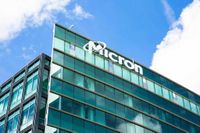Nvidia (NASDAQ: NVDA) is making waves in the artificial intelligence (AI) sector, particularly with its recent announcements aimed at revolutionizing humanoid robotics. The company unveiled its groundbreaking Nvidia Isaac GR00T N1 model, touted as "the world's first open, fully customizable foundation model for generalized humanoid reasoning and skills." This innovation is part of Nvidia's broader strategy to capitalize on the growing demand for AI technologies, especially as industries grapple with significant labor shortages estimated to exceed 50 million globally.
During a recent event, Jensen Huang, CEO of Nvidia, emphasized the potential of the GR00T N1, stating, "With Nvidia Isaac GR00T N1 and new data-generation and robot-learning frameworks, robotics developers everywhere will open the next frontier in the age of AI." This statement underscores Nvidia's commitment to positioning itself at the forefront of the robotics revolution.
The GR00T N1 model is designed to enhance humanoid robot development, featuring an architecture inspired by human cognition. It includes two operational modes: System 1, which mimics human reflexes, and System 2, which allows for more deliberate decision-making. Alongside GR00T N1, Nvidia introduced simulation frameworks and blueprints for robotic development, including the Nvidia Isaac GR00T Blueprint and Newton, an open-source physics engine developed in collaboration with Alphabet's Google DeepMind and Disney Research.
Disney Research is already utilizing the Newton engine to create next-generation entertainment robots, including BDX droids inspired by the Star Wars franchise. Kyle Laughlin, senior vice president of Walt Disney Imagineering research and development, remarked, "The BDX droids are just the beginning. We're committed to bringing more characters to life in ways the world hasn't seen before, and this collaboration with Disney Research, Nvidia, and Google DeepMind is a key part of that vision." This partnership highlights the diverse applications of Nvidia's technology beyond traditional manufacturing and into the realm of entertainment.
While the excitement surrounding these new technologies is palpable, some analysts caution against assuming immediate financial gains. The introduction of innovative products does not always translate into instant success. Nvidia generated $130.5 billion last year, and while the potential for GR00T N1 and its associated frameworks is significant, it remains to be seen how much they will impact the company's bottom line.
Amid these developments, Nvidia's stock remains nearly 20% below its peak earlier this year, prompting investors to reconsider their positions. Historically, purchasing Nvidia shares during market pullbacks has proven to be a lucrative strategy. The current trajectory of AI-related spending, particularly from major cloud service providers, adds another layer of complexity to investment decisions.
Investors are closely monitoring the spending plans of hyperscaler cloud service providers such as Amazon Web Services (AWS), Google Cloud, and Microsoft Azure. These companies are poised to increase their capital expenditures significantly, which bodes well for Nvidia. For instance, Amazon's CFO Brian Olsavsky indicated that the company expects to spend $105.2 billion in 2025, primarily to support the growing demand for technology infrastructure related to AWS. Similarly, Alphabet plans to ramp up its spending from $52.5 billion in 2024 to $75 billion in 2025, focusing on technical infrastructure, including servers and data centers.
Microsoft is also making substantial investments, with plans to allocate $80 billion in its fiscal 2025 to expand AI-enabled data centers. This trend of increasing capital expenditure among these tech giants signals robust demand for Nvidia's products and services, particularly in the AI and data center sectors.
As Nvidia continues to innovate and expand its offerings, the potential for growth in the robotics sector is immense. The company’s advancements in AI-powered robotics could help address labor shortages across various industries, providing a compelling reason for investors to consider Nvidia stock as a long-term investment.
In summary, while Nvidia's new technologies, particularly the GR00T N1 model, present exciting opportunities for the future of robotics, investors should approach the stock with a measured perspective. The combination of increased spending from major cloud providers and Nvidia's innovative solutions in AI and robotics may create a favorable environment for the company's growth in the coming years.


